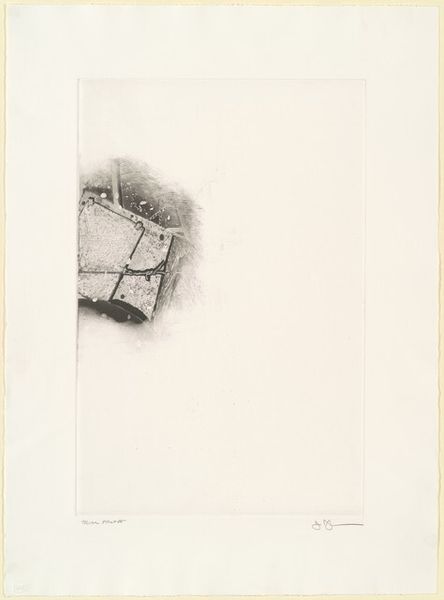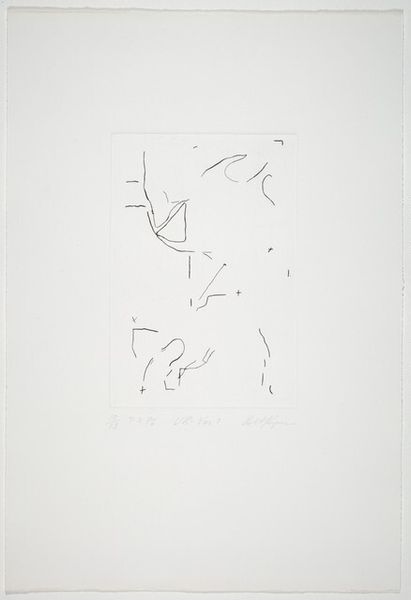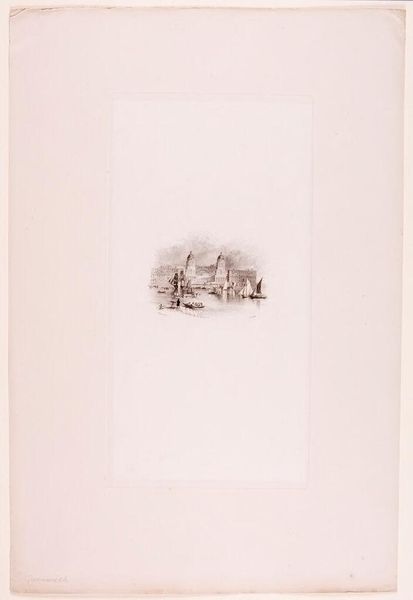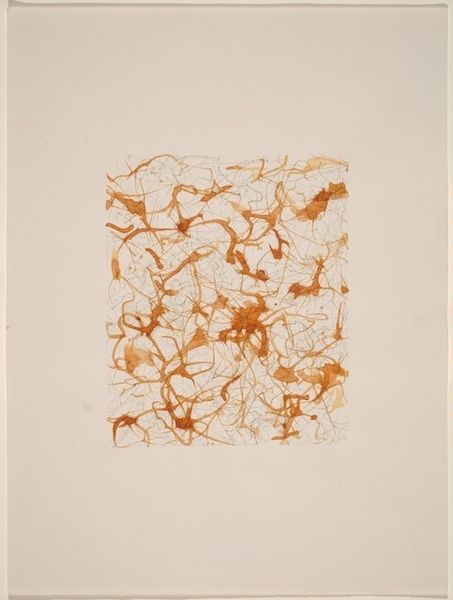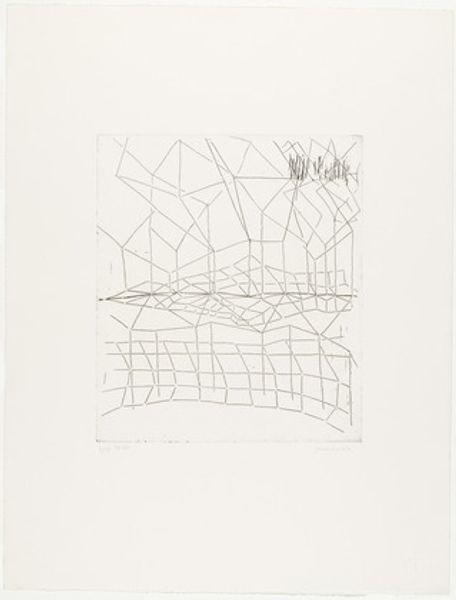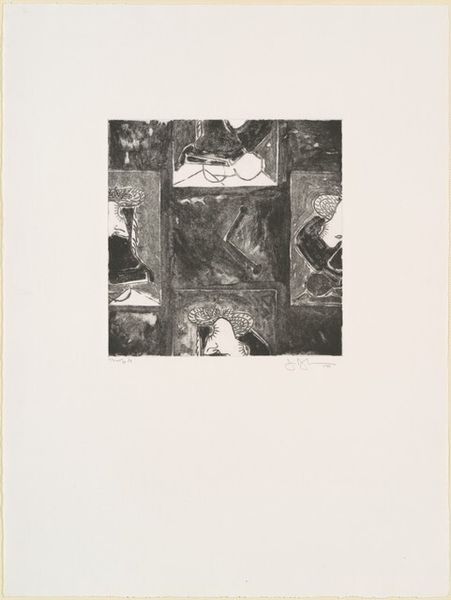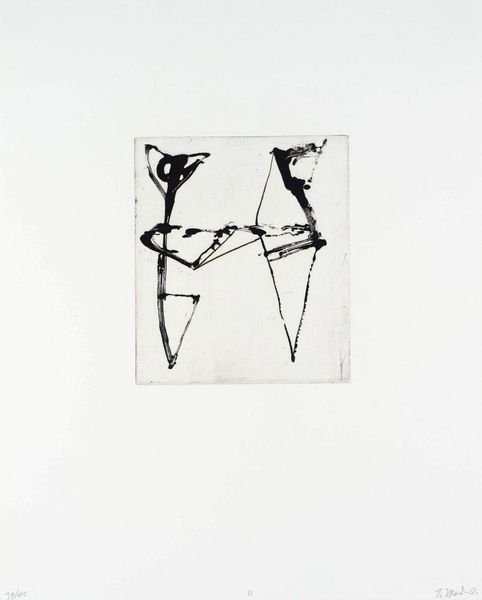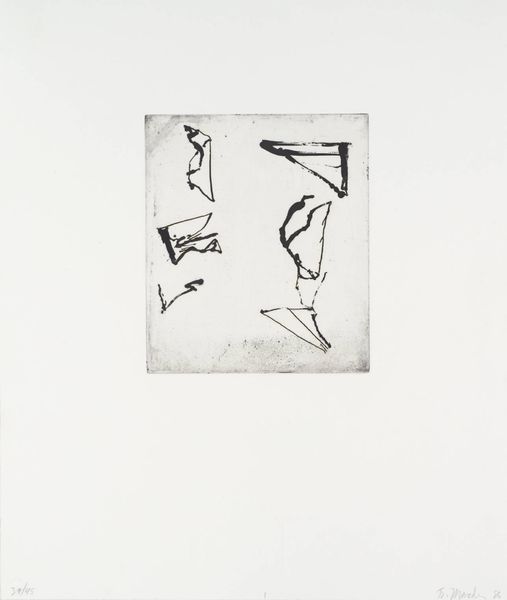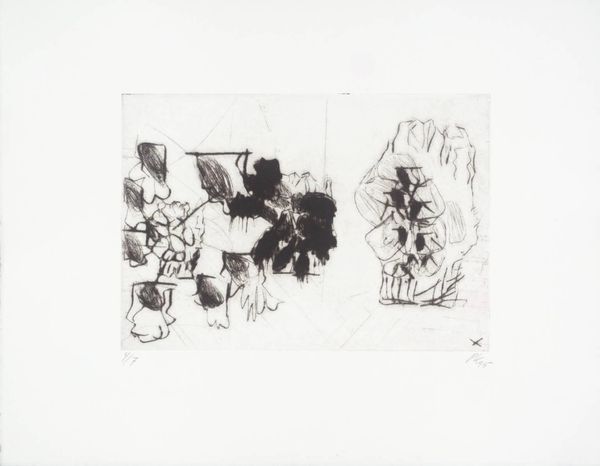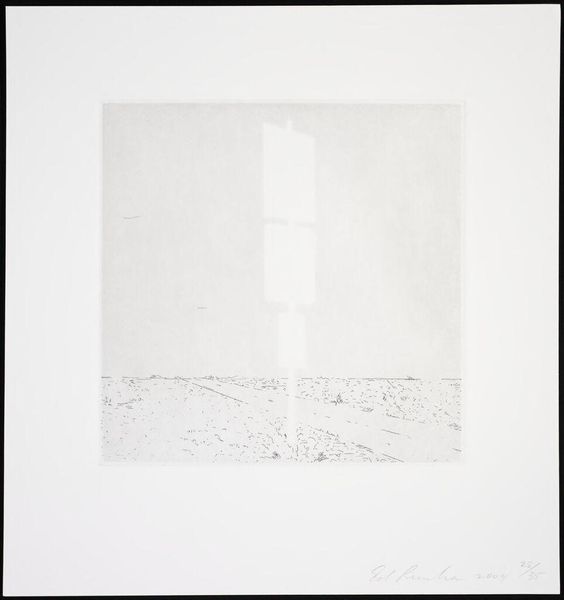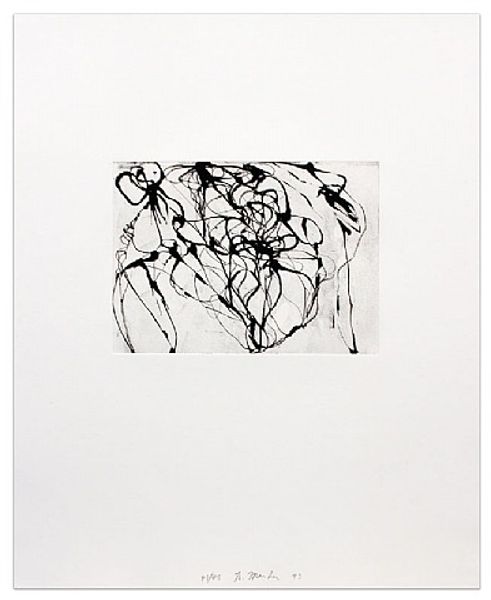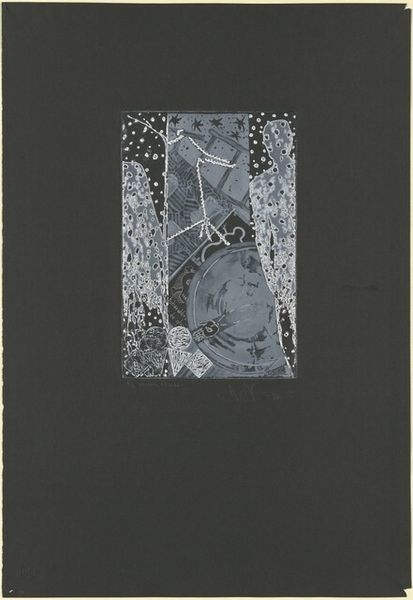
drawing, print, pencil
#
portrait
#
drawing
# print
#
pencil drawing
#
pencil
#
abstraction
#
line
Dimensions: plate: 17 x 18.6 cm (6 11/16 x 7 5/16 in.) sheet: 50.3 x 35 cm (19 13/16 x 13 3/4 in.)
Copyright: National Gallery of Art: CC0 1.0
Editor: Here we have Robert Keyser's 1977 print, "The Jester Courts Death and Sees Himself", rendered with pencil. It's rather minimal, but I get this feeling of looking at a fractured mirror, reflecting some internal struggle. What symbols do you see at play here? Curator: Fractured, yes, indeed. The jester, of course, carries a heavy cultural weight. Traditionally a figure of mockery, even tolerated foolishness at court, the jester also embodies freedom. They could speak truth to power under the guise of jest. To see him courting Death, his own reflection no less, hints at a confrontation with mortality and perhaps even the self-awareness to mock it. Do you notice how death is constructed of linear shapes? Editor: I do. Those sharp angles almost feel like a deconstructed mask, a facade stripped bare. Curator: Precisely! Keyser seems to be playing with the jester's symbolic unmasking, forcing him to confront his own mortality beyond the stage persona. The use of pencil and print allows for this fragile, almost ghost-like quality. It echoes the transient nature of life and the performative nature of identity, don’t you think? This print contains many different symbolic values related to different themes. Editor: It’s fascinating how such a sparse image can contain so many layers of meaning! Curator: Visual symbols often possess many layers, a depth built over time, shaped by collective experience and memory. I'd add, consider this symbol with psychoanalytical frameworks. Perhaps this reflects internal conflict. The work leaves me feeling thoughtful about personal authenticity in the face of universal truths, how artists shape our interpretation of them. Editor: I think looking for symbolic meaning has definitely unlocked deeper aspects of the work for me! Curator: And for me too! The viewer’s own memory activates them, don't you agree?
Comments
No comments
Be the first to comment and join the conversation on the ultimate creative platform.
